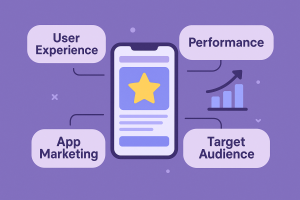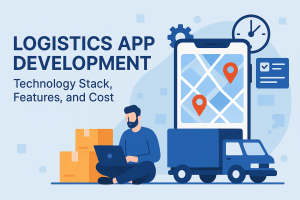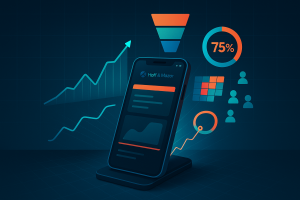The world of software product development has undergone a seismic shift. No longer is it confined to the walls of single, siloed departments. In today’s hyper-agile and fiercely competitive tech landscape, the demand for accelerated innovation, seamless execution, and continuous delivery has driven the evolution of a powerful new paradigm co-development software.
Co-development software is not just another buzzword thrown around in digital boardrooms. It’s a transformative approach that bridges the gap between development teams, business stakeholders, and even external contributors. It enables shared ownership, active collaboration, and real-time co-creation, giving rise to product teams that are more aligned, responsive, and effective.
This article delves deeply into what makes co-development software the silent engine of modern product success. From its foundational principles and integration strategies to its impact on productivity and scalability, we will unravel how this approach has become the secret weapon behind high-performing teams. And for companies looking to hire iOS app developers in USA or explore premium iPhone app development services, the implications of co-development models are nothing short of game-changing.
Understanding Co-Development Software: Beyond the Conventional
At its core, co-development software represents a strategic fusion of technological platforms and team practices that prioritize collective input, modular progress, and real-time transparency. It departs from the traditional model where product management, design, and development operated in segmented phases and instead embraces a continuous feedback loop where all players contribute simultaneously.
Unlike isolated software tools that serve singular purposes, co-development platforms offer integrated environments where developers, designers, analysts, and even third-party stakeholders can collaborate within a unified system. This means source code, documentation, task management, and quality assurance are not only accessible but editable and accountable across the board.
For companies leveraging premium iPhone app development services, this means significantly reduced turnaround times, faster iterations, and an elevated ability to align the product with user expectations. By involving iOS developers and iOS app development guide, QA testers, and clients from the inception stage, co-development software helps avoid the bottlenecks that often emerge in linear development models.
Why Co-Development Is Reshaping Product Team Dynamics
Co-development reshapes not just workflows, but entire team dynamics and cultural frameworks within an organization. It enforces a shift from the idea of “handoffs” to “handshakes”—where collaboration is not transactional but continuous.
In traditional product development, different teams often worked in silos, leading to mismatches between vision and execution. A designer might pass off a mockup to the engineering team only to find it was impossible to implement as envisioned. Co-development software eradicates such disconnects by integrating cross-functional tools and shared dashboards where both roles co-create and iterate in unison.
Moreover, product teams embracing this model are often characterized by enhanced agility. When challenges arise, solutions are brainstormed in real time, with no need to escalate through hierarchical chains. This fluid communication and decision-making ecosystem empower teams to respond swiftly to market changes, bug reports, or user feedback.
For those looking to hire iOS app developers in USA, co-development practices make the onboarding and collaboration of remote or freelance talent incredibly seamless. The shared environment ensures everyone—no matter where they’re located—has synchronized access to the development lifecycle.
The Role of Co-Development in Accelerating Time-to-Market
In a world where tech trends shift overnight and user expectations evolve rapidly, speed to market can make or break a product. This is where co-development software delivers an unmatched competitive edge.
By breaking down silos, streamlining communication, and automating integration between various disciplines, co-development platforms slash redundant processes and minimize the typical delays associated with back-and-forth approvals and clarification meetings. Real-time updates across codebases, automated testing tools, and visual workflows mean that decision-making happens faster, bugs are identified sooner, and releases occur more frequently.
Companies engaging in premium iPhone app development services particularly benefit from this acceleration. The iOS ecosystem is highly dynamic, with frequent updates, API changes, and design standard revisions from Apple. Co-development allows teams to stay in lockstep with these changes, pushing updates and patches swiftly while maintaining quality assurance.
Key Features That Define Effective Co-Development Software
While the concept of co-development is powerful, it’s the execution that defines success. Not all platforms are created equal. The most effective co-development software includes a core set of features that enable smooth collaboration, transparent versioning, and actionable insights.
1. Unified Development Environments
An integrated development environment (IDE) accessible via the cloud allows multiple developers to code simultaneously without environment conflicts. Whether working in Swift for iOS or Python for back-end services, this ensures harmony across codebases.
2. Real-Time Collaboration and Pair Programming
Tools like shared terminal access, live code sessions, and real-time feedback encourage pair programming and code reviews. These features enhance quality and reduce the review cycles, especially useful when engaging remote iOS experts from the USA.
3. Version Control and Code Transparency
Co-development software must include robust versioning systems, such as Git-based workflows, which allow every contributor to track, revert, and comment on changes. This ensures code integrity while encouraging transparent experimentation.
4. Task and Workflow Integration
Integration with tools like Jira, Trello, or Notion means that project management isn’t happening in isolation. Development tasks, testing updates, and sprint reviews all happen in one cohesive digital workspace.
5. Cross-Platform Integration
Top-tier co-development software supports integrations with platforms used in premium iPhone app development services, including Xcode, TestFlight, Figma, Firebase, and Postman. This enables seamless design-to-development pipelines.
How Co-Development Empowers Cross-Functional Teams
The true power of co-development software lies in its ability to harmonize diverse disciplines into a unified effort. Developers, designers, QA testers, product managers, and even marketers can participate in the creation and evolution of a product from day one.
This democratization of product ownership leads to a more empathetic understanding of each team’s goals and limitations. Designers learn how their choices impact performance. Developers grasp the rationale behind UX decisions. Marketing gets real-time access to updates and release notes, enabling better launch strategies.
For teams employing or seeking to hire iOS app developers in USA, this is especially useful. A centralized hub removes the usual barriers faced by remote developers, freelancers, or offshore teams. Everyone participates as equals, reducing delays and increasing product quality.
Security and Compliance in the Age of Co-Development
As collaboration broadens, so does the attack surface. Effective co-development platforms are built with enterprise-grade security protocols. Features like access controls, role-based permissions, end-to-end encryption, and audit trails ensure that collaboration doesn’t come at the cost of compliance.
For companies operating in industries such as finance, healthcare, or enterprise SaaS—where premium iPhone app development services must meet strict data regulations—this balance between openness and control is critical. Platforms that offer SOC2, ISO27001, or GDPR compliance provide peace of mind without compromising agility.
Scalability and Future-Proofing Your Product Team
Co-development software scales as your team scales. Whether you’re a startup shipping your MVP or an enterprise managing multiple development squads across continents, these platforms adapt to your size and complexity.
This scalability is especially important for growing product teams that require fluid collaboration between in-house developers and contracted iOS specialists. The ability to rapidly onboard new contributors, share knowledge, and maintain productivity is crucial to avoid burnout and stagnation.
The Business Impact: From Collaboration to Competitive Advantage
The ripple effects of using co-development tools extend far beyond the engineering floor. Products get built faster. Feedback loops shrink. Bugs are squashed quicker. And perhaps most critically—teams remain aligned and motivated.
Companies that embrace this approach report higher retention rates, reduced time-to-market, and stronger customer satisfaction. Co-development isn’t just about building software better—it’s about building teams that can sustain innovation and compete with agility.
For business leaders seeking to hire iOS app developers in USA or partner with premium iPhone app development services, investing in or aligning with teams that use co-development strategies is not just wise—it’s essential.
Conclusion: Co-Development as a Catalyst for Future-Ready Product Teams
As the software world grows more complex and interconnected, the demand for nimble, collaborative, and high-performing teams will only rise. Co-development software is not a fleeting trend; it’s the bedrock of how successful products are built in the modern age.
Whether you’re building the next groundbreaking app or scaling your existing product suite, adopting a co-development model can dramatically enhance your workflow, team cohesion, and market responsiveness.
And if you’re planning to hire iOS developers in USA or expand your reach through premium iPhone app development services, ensure that co-development practices are baked into your strategy. This fusion of collaboration and innovation may very well be the most critical asset in your digital arsenal.







